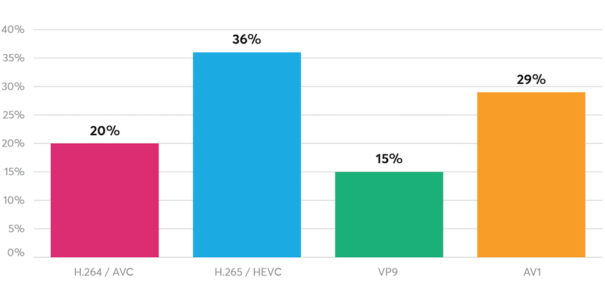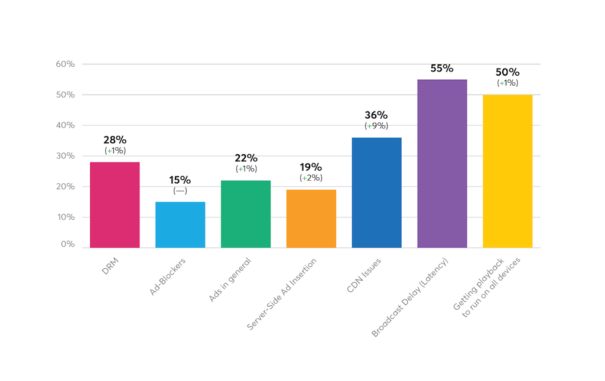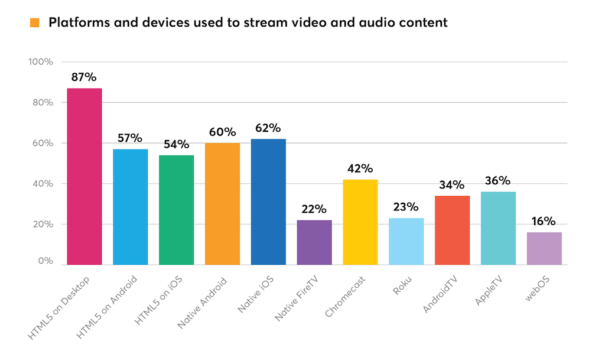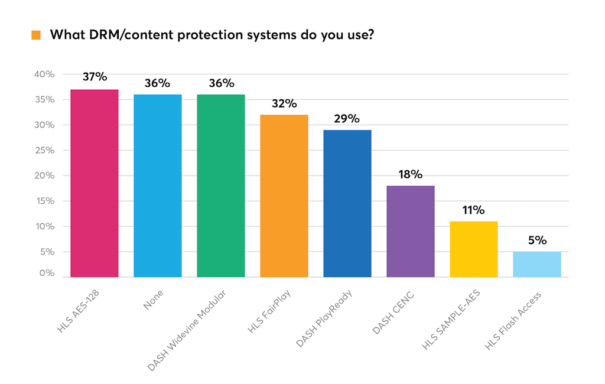Bitmovin Video alerta sobre problemas generalizados de latencia y fragmentación en códecs, formatos y dispositivos
El informe ‘Video Developer Report’, elaborado por Bitmovin, analiza el estado de la codificación partiendo de las opiniones de 456 desarrolladores de vídeo entre broadcaters, editores, servicios de streaming OTT, plataformas de vídeo online y plataformas de medios sociales de 67 países.
Bitmovin, empresa centrada en la tecnología de vídeo online, publica anualmente el informe Video Developer Report, que revela una instantánea de las principales tendencias y problemas de la tecnología de vídeo. El estudio se basa en las opiniones de 456 desarrolladores de vídeo entre broadcaters, editores, servicios de streaming OTT, plataformas de vídeo online y plataformas de medios sociales de 67 países.
Stefan Lederer, CEO de Bitmovin, subraya que “la industria del vídeo en línea está en auge, con el lanzamiento de nuevos servicios todos los días. El Video Developer Report revela cómo los desarrolladores están construyendo servicios, sus planes para el futuro y los principales problemas a los que se enfrentan. Al tratarse de la segunda edición del informe, podemos ver cómo evolucionan estas tendencias. Encontramos las ideas extremadamente valiosas y estamos encantados de poder compartirlas con los desarrolladores de vídeo de todo el mundo”.
Latencia
La latencia y la reproducción de dispositivos son las principales preocupaciones tecnológicas. La latencia es el mayor problema que se experimenta hoy en día con la tecnología de vídeo, según más de la mitad de los encuestados a nivel mundial (55 por ciento) y casi tres cuartas partes con sede en América Latina (74 por ciento). Los retrasos en la entrega pueden ser un problema particular para el streaming en línea en comparación con los radiodifusores tradicionales, especialmente para los eventos deportivos en directo.
El siguiente problema más frecuente es garantizar la reproducción en todos los dispositivos, señalado como un dolor de cabeza por la mitad (50 por ciento) de los encuestados globales, casi exactamente el mismo porcentaje (49 por ciento) que en la encuesta de Bitmovin del año pasado.
Un futuro multicodec
El 92% de los encuestados en el estudio emplea el H.264/AVC domina el uso actual en codificación de vídeo. La adopción de H.265/HEVC se ha expandido rápidamente, hasta casi la mitad de los encuestados (42 por ciento), en comparación con menos de un tercio (28 por ciento) en 2017.
Más de un tercio de los encuestados (36 por ciento) planean desplegar H.265/HEVC en los próximos doce meses. Esto representa una disminución del 40% respecto a la encuesta de 2017, lo que refleja una tendencia hacia el uso de una gama más amplia de códecs de próxima generación en el futuro.
Por su parte, el AV1 ha ganado un impulso significativo, con casi un tercio (29 por ciento) de los encuestados planeando usar el códec en el próximo año. Esto es más del doble de la tasa de uso planificada (14 por ciento) que se vio en el Informe de Bitmovin Video Developer de 2017. El 15 por ciento planea usar VP9, un 18 por ciento menos que en 2017.
Fragmentación continua
HLS y MPEG-DASH siguen siendo las opciones más populares en streaming, utilizadas en un 82% y un 61% respectivamente. Sin embargo, también hay una fragmentación considerable, con RTMP usado por un tercio (33 por ciento) y Smooth Streaming (27 por ciento) y Progressive Streaming (23 por ciento) cada uno usado por alrededor de un cuarto. El uso de MPEG-CMAF casi se ha duplicado desde el año pasado (del 6 al 10 por ciento) y casi un cuarto (23 por ciento) planea implementar el formato en los próximos 12 meses.
HTML5 a través del navegador es, con mucho, el formato más utilizado para la entrega de vídeo y audio, y el 87 por ciento de los encuestados lo utilizan hoy en día. Actualmente, Apple iOS es la plataforma nativa con mayor soporte, con un 62 por ciento frente al 60 por ciento para Android a nivel mundial. La tendencia es consistente en la mayoría de las regiones del mundo, con un 65 por ciento (frente al 63 por ciento) respectivamente en APAC, 64 por ciento (frente al 59 por ciento) en Norteamérica, 63 por ciento (frente al 59 por ciento) en EMEA y 63 por ciento (frente al 63 por ciento) en LATAM.
En cuanto al soporte para dispositivos de televisión de consumo, Chromecast es el líder actual, con el apoyo del 42 por ciento de los encuestados, en comparación con el 36 por ciento de Apple TV, el 34 por ciento de Android TV y el 23 por ciento de Roku. Es probable que Android TV vea el mayor impulso en los próximos 12 meses, con el 17 por ciento de los desarrolladores que planean mudarse para añadir soporte, en comparación con el 16 por ciento para Apple TV, el 11 por ciento para Chromecast y el 10 por ciento para Roku.
DRM
The uso de DRM está aumentando rápidamente. Más de uno de cada tres (36 por ciento) encuestados dijeron que no están utilizando ningún sistema de protección de contenido o DRM, alcanzando un máximo del 40 por ciento de los encuestados en EMEA.
Esto representa una rápida aceptación desde la encuesta de Bitmovin de 2017, en la que dos tercios de los encuestados a nivel mundial (65 por ciento) dijeron que no estaban utilizando DRM en absoluto. Esto podría reflejar un cambio de contenido premium de los servicios tradicionales de cable y satélite a OTT/entrega en línea.
Did you like this article?
Subscribe to us RSS feed And you will not miss anything.



















